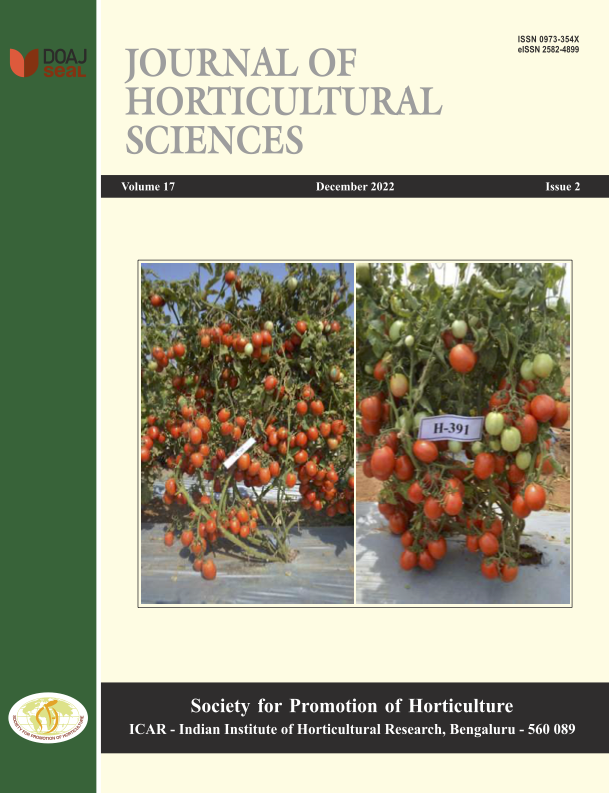Screening of yard long bean (Vigna unguiculata subsp. sesquipedalis (L.) Verdcourt) genotypes for resistance to Colletotrichum gloeosporoides
DOI:
https://doi.org/10.24154/jhs.v17i2.1469Keywords:
Anthracnose, Colletotrichum gloeosporoides, yard long beanAbstract
Anthracnose is one of the most destructive fungal diseases caused by Colletotrichum gloeosporoides in yard long bean, leading to complete crop loss at all stages and its parts like hypocotyls, stem, peduncle, flowers, leaves and pods were seriously affected. Few bush type cowpea cultivars have been earlier identified as reliable sources of resistance while trailing types are susceptible, but high yielding. Breeding resistant varieties is suggested as the only practical strategy, especially under hot and humid condition. Fifty-yard-long bean genotypes belonging to bush, semi erect and pole types were screened against anthracnose disease through artificial inoculation under pot culture. The present study identified the resistant varieties of vegetable cowpea through artificial inoculation followed by detached leaf assay. Among the 50 varieties of yard long bean observed, Kanakamony, dual purpose yard long bean was found highly resistant with disease severity of 3.67% followed by Arimbra local.
Downloads
Downloads
Published
Issue
Section
License
Copyright (c) 2022 MERIN ELZA GEORGE, Sarada S, Joy M

This work is licensed under a Creative Commons Attribution-NonCommercial-ShareAlike 4.0 International License.
Authors retain copyright. Articles published are made available as open access articles, distributed under the terms of the Creative Commons Attribution-NonCommercial-ShareAlike 4.0 International License, which permits unrestricted non-commercial use, distribution, and reproduction in any medium, provided the original author and source are credited. 
This journal permits and encourages authors to share their submitted versions (preprints), accepted versions (postprints) and/or published versions (publisher versions) freely under the CC BY-NC-SA 4.0 license while providing bibliographic details that credit, if applicable.





 .
. 











